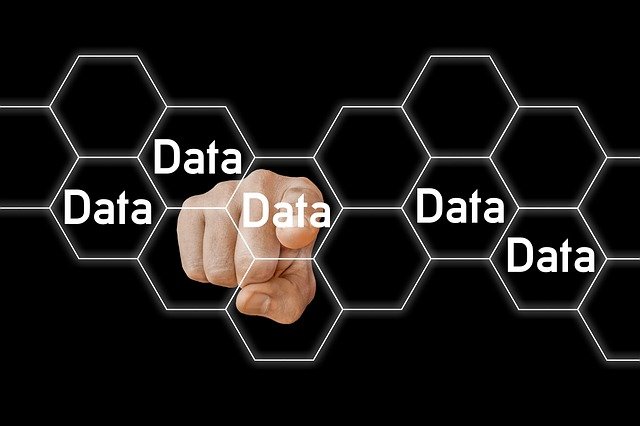Offshore Industry Background and need for Business Digitalization
The service companies’ prices evolution in the offshore market are obviously linked to the market capacity available versus the world demand variation for oil, which requires the key players to adapt their commercial offers according to the demands and new technology needed in the market.
Service companies have had the obligation to reduce their operating costs since the drop in price of the barrel of oil, which occurred since 2008 and the obligation to offer more efficient services and of course including new technologies to meet the new economic situation.
For example, the collection of real-time seismic data on digital media rather than the use of magnetic tapes for the storage of customer data has eliminated delivery delays and human handling errors. Technical monitoring and remote planning of equipment maintenance with the increasingly widespread use of IoT has enabled the centralized management of offshore production sites. Finally, the reduction of Co2 emissions from polluting equipment to meet the new environmental taxation imposed by the Paris agreement of December 12, 2015.
The initial step was to set up process evaluation methods using the finance teams and the purchasing function to identify expenses by category and work on their budgeting for the next 3 to 5 years. Many companies seeing their margins reduced have had to go through phases of unprofitable business plan refinancing and the sale of assets while waiting for a further rise of the barrel of oil price.
The market has become more demanding, new methods of cost management and centralized maintenance planning including the automated creation of work orders and purchase orders, as well as optimized inventory management have been implemented with the deployment of SAP.
The use of CMMS such as TM Master, IFS cloud or Maximo has become widespread, providing a detailed view of the equipment, their current status and associated operating costs.
Since the global pandemic of 2020, the fluctuation of the barrel of oil prices and the general increase of the raw materials and services costs have reduced the company’s operating margin and imposed the definition of new operating procedures including reduced stocks management, budgeted purchases activities only and the storage of products in high demand.
The future scenario for 2022 will certainly be a significant fluctuation in the world demand for oil, linked to the rise in bank interests rates, a global inflation on wages, rise of goods and services prices and a stagflation of the global economy, in parallel with the development of alternative offers such as liquefied gas or other energy MIX by country.
1- Data collection in the Offshore & Maritime market:
The collection of data concerning the operational costs of the equipment is subject to the technology used and the possibility of collecting in real time data related to the technology of the equipment which is not always connected to a cloud-based network.
The data transfer protocols used for the collection of may be subject to user licenses imposed by equipment manufacturers, who may impose the use of their proprietary applications. Companies offering complete IoT solutions are Schneider Electric, Siemens, Omron, Moxa and other manufacturers.
The important elements to measure here are obviously the management of energy consumption on board the ship because the consumption of fuels is directly linked to the electricity consumption and therefore the performance of the Equipment installed.
For example, the management of six power generators and their electrical distribution systems can trace key data corresponding to the operating status of equipment on the network, by collecting information such as the operating temperature of equipment and fluids (water + oil) or the temperature of the gases released into the atmosphere, therefore knowing the volumes of CO2 and NOx released by the fleet of equipment.
Maritime equipment manufacturers such as Wartsilla, Rolls Royce or other manufacturers all have remote equipment management offers based on the data collected and allowing remote management of the performance of generators. However, its offers may be linked to a technical service offer based on the manufacturer's recommendations. The transmission of the collected data to an SAP-type ERP may be at the discretion of the manufacturer.
The ability to collect data in real time is also related to the bandwidth or data quota available with on-board communication systems. A real-time data storage and processing capacity before delivery to customers allows real-time review of the final result.
In reality, the deployment of the IoT on board offshore equipment remains very limited because it requires significant technical modifications to the installations to add new sensors which must be adapted to the existing system, be wired and connected to the data transfer networks of the fleet.
This technical choice remains very limited unless there is an obvious need for a project or a customer. In fact, service companies are focusing on replacing their fleet, which will integrate new technical solutions and meet new market needs.
2- Budget definition based on financial data:
Characterizing the Spend and defining budgets remains a difficult task due to the quality of the financial data collected.
Linking an invoice to a project or to an expense for an equipment when the order reference is non-existent or the name of the equipment is missing or the invoice is received after the invoicing of the service to the customer remains a difficult exercise.
It is therefore realistic to say that certain expenses can be randomly allocated depending on the context and have the consequences of generating incorrect financial information if we look at expenses at the project level or by type of equipment.
This problem is due to the nature of purchase requests which can sometimes be verbal and therefore without a written purchase order and which will not allow invoices to be linked to a budget.
The definition of ship maintenance costs and their certification according to the obligations of the flags, being managed by the technical teams intervening at the global level and according to the recommendations of their customers, imposes the obligation to work on data analyzes by Project. Indeed, the types of costs and the variations of the costs which can be related to the needs of the customer, to the geographical places or to the time imposed for the realization of the works.
During the period between 2008 and 2020, the price of oil being low and the daily costs of the boats being affected by this period of recession forced companies to work on the categorization of their expenses and on a more detailed planning of their cash flow.
The cost of Nox or Co2 emissions have forced companies to measure and reduce their emissions significantly.
3- Putting data into perspective and optimising processes
CMMS software generally makes it possible to estimate maintenance costs and costs related to subcontracting activities, but does not allow simulations of operational costs related to the implementation of various scenarios and determine possible operational costs reductions.
There are therefore two possible methods here, which are the analysis of the costs linked to the process and the analysis of the costs of the subcontracting services.
The analysis of the costs of the processes can be estimated by making simulations of the context of use of the equipment and will make it possible to visualize the situations which can create a non-optimized operating cost versus optimized operating scenarios.
For example, when we observe the operation of a set of generators, we will observe untimely starts to compensate for peaks in intensity linked to electric motor starts. Once the phenomenon has been identified and quantified, it will be possible to reduce fuel consumption by the use of batteries which will supply its current calls and reduce the operating time of the generators, thus increasing the maintenance intervals of the Equipment and reducing annual operating budgets.
The solutions allowing this type of analysis will be products such as Cognite data fusion or Shape digital. Solutions for performing equipment resistance analyzes will be solutions such as Simulia 3D Experience.
4- SMART Contracts definition in order to optimize the operational management:
Service companies in the offshore environment, which can operate in several regions of the world according to customer needs, must manage an average of 25,000 to 50,000 suppliers to ensure the continuity of their activities.
Managing subcontractors on several continents therefore involves managing different cultures, practices and legal obligations by country, which will affect the methods of execution of customer contracts depending on the geographical location of the execution of the service contract.
It is therefore necessary to be able to secure the activities of the operations and to ensure that the subcontractors meet the quality and performance criteria and this in accordance with the costs defined in the contracts signed with the customers. It is therefore important to secure the supply of products and to assess the quality of the services provided by the supply chain.
The quality of services provided to customers is equal to the quality of the sum of providers included in the supply chain. It is therefore important to control its supply chain.
The notion of smart contract therefore corresponds to the establishment of a framework agreement between two entities with the aim of defining the entire scope of activities such as costs, deadlines and quality.
A notion of quality therefore including elements such as security procedures for the execution of service contracts. For example, a technical service from a subcontractor must be carried out in accordance with the customer's safety rules and must be executed once a fire permit has been obtained. In the same way, elements linked to environmental rules could be included with a definition of the classification of the products used and a definition of the rules of waste management.
The notion of quality also includes the qualifications of those involved, such as the minimum level of study, experience or certification related to production tools. These obligations are very often imposed for the deployment of IT solutions or the intervention on specific equipment.
The concepts of deadlines refer to the time required to perform the services. A concept of method of execution to be included here to ensure that the guarantee of the service provided is in accordance with the obligations of the manufacturers of the equipment. The use of IoT can be included here for the definition of response times related to condition-based maintenance methods.
A concept of inventory management and delivery times can be included according to the obligations defined in the commercial agreements with the service providers, in order to secure all the necessary supplies.
A notion of the cost of services that can be defined according to the geographical areas of execution. The objective is the budgeting of costs, but also the control of price variations. Very popular topic if we consider the current global price inflation.
Once all the criteria have been defined, it will therefore be necessary to set up a method for measuring these elements with the objective of making a periodic evaluation of the performance criteria also called KPI.
In order to conclude this chapter concerning the digitization of production processes and their management with outsourcing, it is important that the volume of data collection is significant. It is necessary to isolate the elements providing a significant result and to put their operation in context to optimize their operating cost and the volumes of data to be processed.




